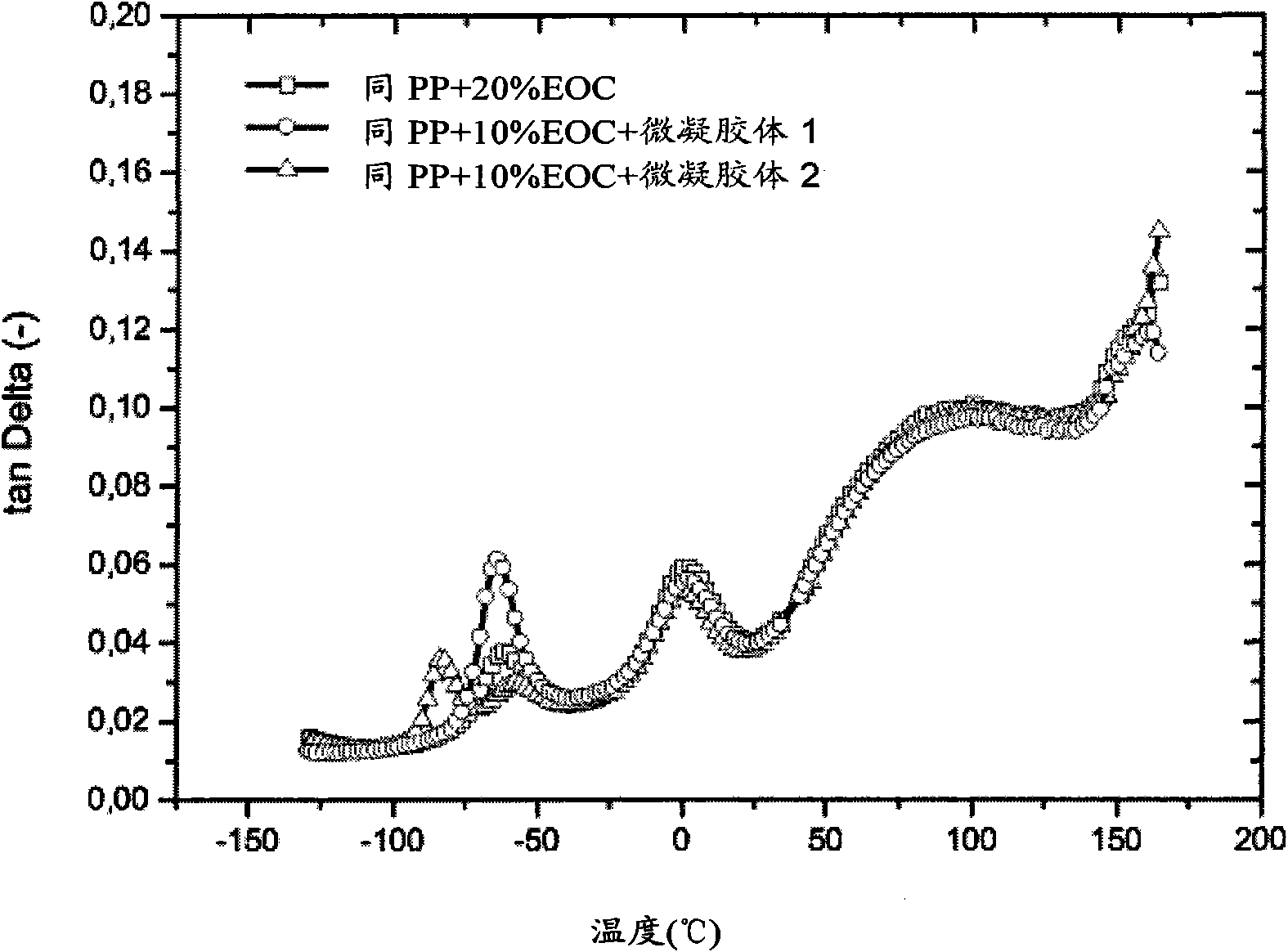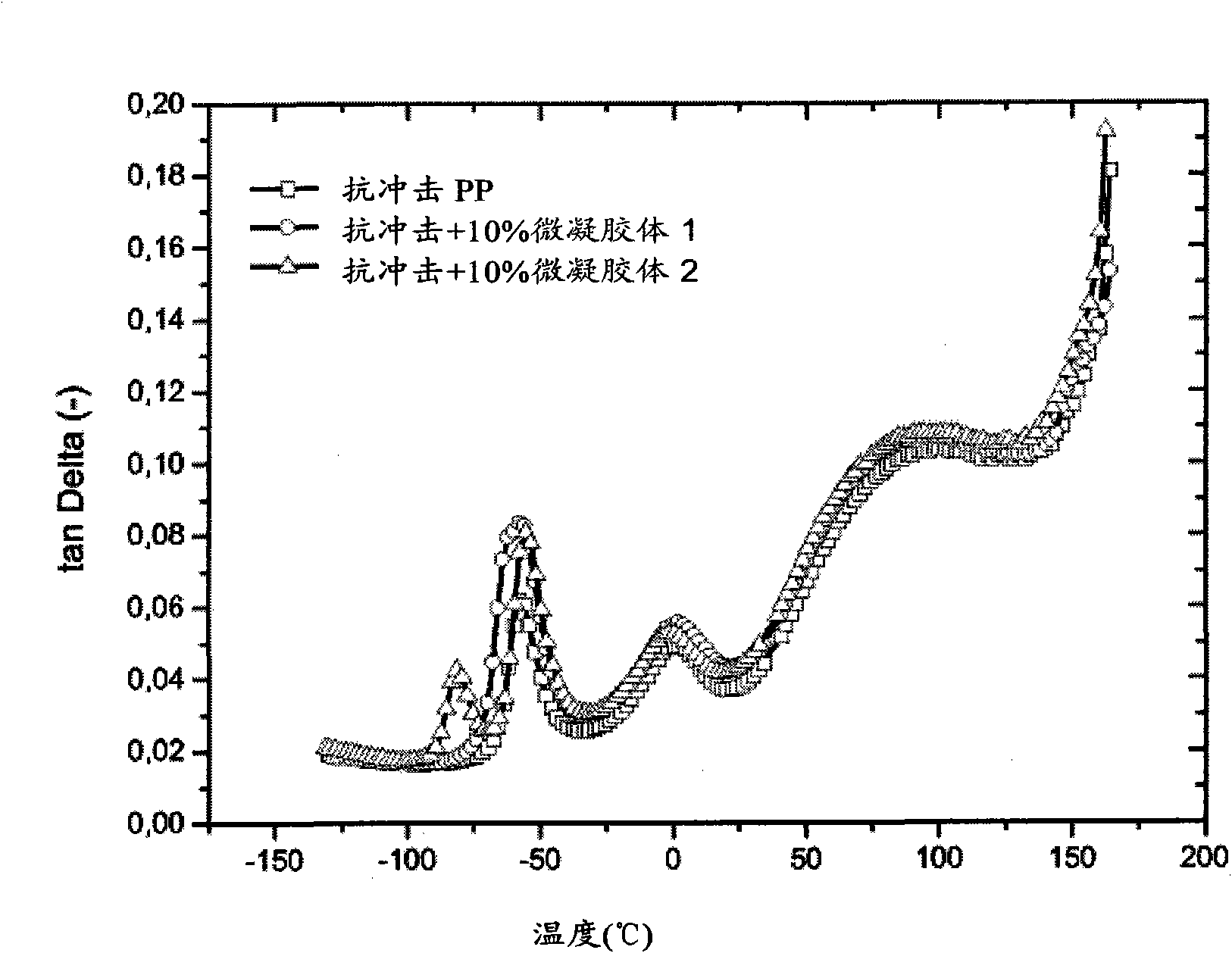Impact-modified polypropylene
A polypropylene, propylene technology, applied in the field of polymer compositions with high impact strength, can solve problems affecting low temperature applications, etc.
- Summary
- Abstract
- Description
- Claims
- Application Information
AI Technical Summary
Problems solved by technology
Method used
Image
Examples
test approach I
[0143] Based on the standard test method ISO 16014-2: 2003 and ISO 6014-4: 2003, the weight average molecular weight (Mw) and the number average molecular weight (Mn) are measured by molecular exclusion chromatography (SEC) and the molecular weight distribution (MWD= Mw / Mn).
[0144] Under 140 degrees centigrade, adopt online viscometer in Waters Alliance GPCV2000SEC instrument (eluent is 1,2,4-trichlorobenzene ( TCB)) to measure molecular weight average and molecular weight distribution. A combination of 2 mixture beds and a TSK-Gel column (from TosoHaas), the system was calibrated with NMWD polystyrene standards (from Polymer laboratories).
[0145] 2. Melt flow rate (MFR)
[0146] At 230°C for polypropylene and at 190°C for polyethylene, the load is 2.16kg (MFR 2 ), to measure the melt flow rate. The melt flow rate refers to the amount (in grams) of polymer extruded within 10 minutes by a test device conforming to the ISO 1133 standard at a temperature of 230°C or 190...
Embodiment 1(Ex1) and comparative Embodiment 1-3
[0168] Embodiment 1 (Ex1) and comparative examples 1-3 (CE1-3)
[0169] In all these examples the propylene homopolymer (MFR 2 (230° C.)=10 g / 10 min, Mw=330,000 g / mol and MWD=5,2) as matrix polymer.
[0170] In CE1, only a single non-crosslinked elastomeric phase consisting of ethylene / 1-octene copolymer (EOC) is dispersed in the matrix polymer. EOC has 42% by weight of C 8 unit, with a density of 0.863 g / cm 3 , MFR 2 (190°C) = 0,5 g / 10 min.
[0171] In CE2, only a single crosslinked elastomeric phase consisting of crosslinked polybutadiene rubber (named microgel 2, with an average particle size of 400 nm) was dispersed in the matrix polymer.
[0172] In CE3, the elastomeric EOC phase used in CE1 and the crosslinked polyisoprene rubber (designated Microgel 1, with an average particle size of 400 nm) were dispersed in the matrix polymer.
[0173] In Ex1, the elastomeric EOC phase used in CE1 and the cross-linked polybutadiene rubber (named microgel 2) were dispersed in th...
Embodiment 2 and comparative Embodiment 4-6
[0197] In all examples, high impact polypropylene was used. Impact PP is a reactor blend of propylene homopolymer and ethylene / propylene rubber dispersed in it. Dispersed EPR represents the first elastomeric phase. The impact polypropylene is produced in a multi-stage polymerization process consisting of 1 loop reactor and 1 gas phase reactor using conventional Ziegler Natta catalyst systems known in the art. In the loop reactor, a propylene homopolymer having an MFR of 25 g / 10 min was produced. The polymer is transferred to a gas phase reactor for the production of EPR. The final composition had an MFR of 7,5 g / 10 min, an XS value of 25% by weight and an intrinsic viscosity of the xylene soluble fraction of 2,8 dl / g. The ethylene content of the xylene soluble fraction was 43.0% by weight.
[0198] In CE4, there is no additional elastomeric phase dispersed in the matrix.
[0199] In CE5, a non-crosslinked elastomeric phase consisting of ethylene / 1-octene copolymer (EOC) i...
PUM
| Property | Measurement | Unit |
|---|---|---|
| Density | aaaaa | aaaaa |
Abstract
Description
Claims
Application Information
 Login to View More
Login to View More - R&D
- Intellectual Property
- Life Sciences
- Materials
- Tech Scout
- Unparalleled Data Quality
- Higher Quality Content
- 60% Fewer Hallucinations
Browse by: Latest US Patents, China's latest patents, Technical Efficacy Thesaurus, Application Domain, Technology Topic, Popular Technical Reports.
© 2025 PatSnap. All rights reserved.Legal|Privacy policy|Modern Slavery Act Transparency Statement|Sitemap|About US| Contact US: help@patsnap.com


